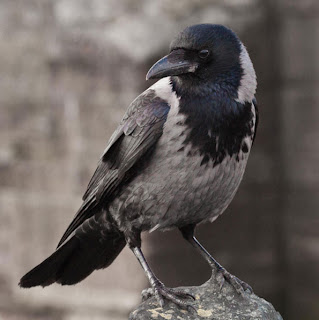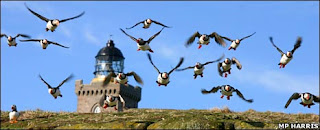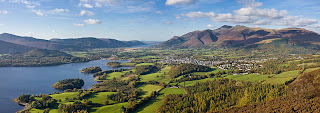The Naturalist’s Diary 1826 October
At the beginning of this month, or latter end of September, some summer birds of passage, of which the swallow is the first, take their departure for warmer regions. The time of their leaving this country varies in different seasons; it is sometimes protracted till the end of October or the beginning of November, and swallows have been seen, in mild weather, to congregate previously to taking their departure, so late as the middle of December. A great diversity of opinion has existed respecting the torpidity and migration of this bird; it is an established fact, that, although the greater part of the swallows that visit England quit the country before the approach of winter, many remain and continue in a state of torpidity till the enlivening sun of April wakes them from their long sleep.
The throstle, the red-wing, and the field-fare which migrated in March, now return; and the ring-ouzel arrives from the Welsh and Scottish Alps to winter in more sheltered situations. About the middle of the month, the common martin disappears; and, shortly afterwards, the smallest kind of swallow, the sand-martin, and the stone-curlew, migrate. The Royston or hooded crow (Corvus cornix) arrives from Scotland and the northern parts of England, being driven thence by the severity of the season. The woodcock returns, and is found on our eastern coasts.
Small birds now begin to congregate, and the common linnet is the first to lead the way. Various kinds of waterfowl make their appearance; and, about the middle of the month, wild geese quit the fens, and go to the rye and wheat lands to devour the young corn; frequently leaving a field as if it had been fed off by a flock of sheep.
Rooks sport and dive, in a playful manner, before they go to roost, congregating in large numbers. The starling sings. The awk or puffin visits for the purpose of incubation, some of the rocky isles of Britain, in amazing numbers.
That singular appearance in nature, the gossamer, occurs in this month. Amid the floral gaieties of autumn, may be reckoned the Guernsey lily, which is so conspicuous an object in October, in the windows and green-houses of florists in London and its vicinity.
In mild seasons there are many flowers still in blow in this month. Generally speaking, however, the ‘last day of summer’ has passed away.
Hips and haws now ornament the hedges. The berries of bryony and the privet; the barberry, the blackberry, the holly and the elder, from which an excellent winter wine may be made
—with sloes, bullaces, and damsons, are now in great plenty.—Blackberries also are ripe in this month, and the collecting of them affords an agreeable pastime to the younger branches of the peasant’s family, as well as some small profit to the parents. These are the fruits of the poor;–they who are more highly favoured with the gifts of fortune revel on the patrician peach and nectarine, the pine and the grape, whose purple clusters contrast so beautifully with the dazzling white of the silver epergne.
But these transient pleasures, –the rose-crowned bowl,–the smiles of beauty, the music’s enchanting voice,–soon, too soon, flit away from our grasp and leave us nothing but the memory of a former day, those ‘blossoms of the past.’ During the months of October, November and December, at the fall of the leaf, insects become less numerous, but many of the Hemiptera may be found in the woods, by beating the ferns and underwood, also many very beautiful Tineae and Tortrices; and aquatic insects may be taken in ponds, in great numbers. Roots of grass, decayed trees may again be resorted to.
October, like the proceeding month, is generally spent by the sea-side or in traveling over the varied surface of the United Kingdom. The lakes of Cumberland are an object of high attraction to the lover of the picturesque; the Highlands of Scotland also have a strong claim on his notice, and are frequently visited by our tourists in search of the sublime and romantic scenery of Nature. Scotland, indeed, is eminently entitled to our attention; and whether we take a trip by steam to the ‘modern Athens,’ and return by the land-route through the northern counties of England, or extend our journey and sail on the placid bosom of Loch Katrine, or climb the Alpine heights of Ben Nevis, we shall be amply repaid for the fatigue and expense of the tour.





.guernseylily.jpg)





The Golden Games, indeed! Hip, hip, hooray! The Brits put on the best Olympics ever! 🙂